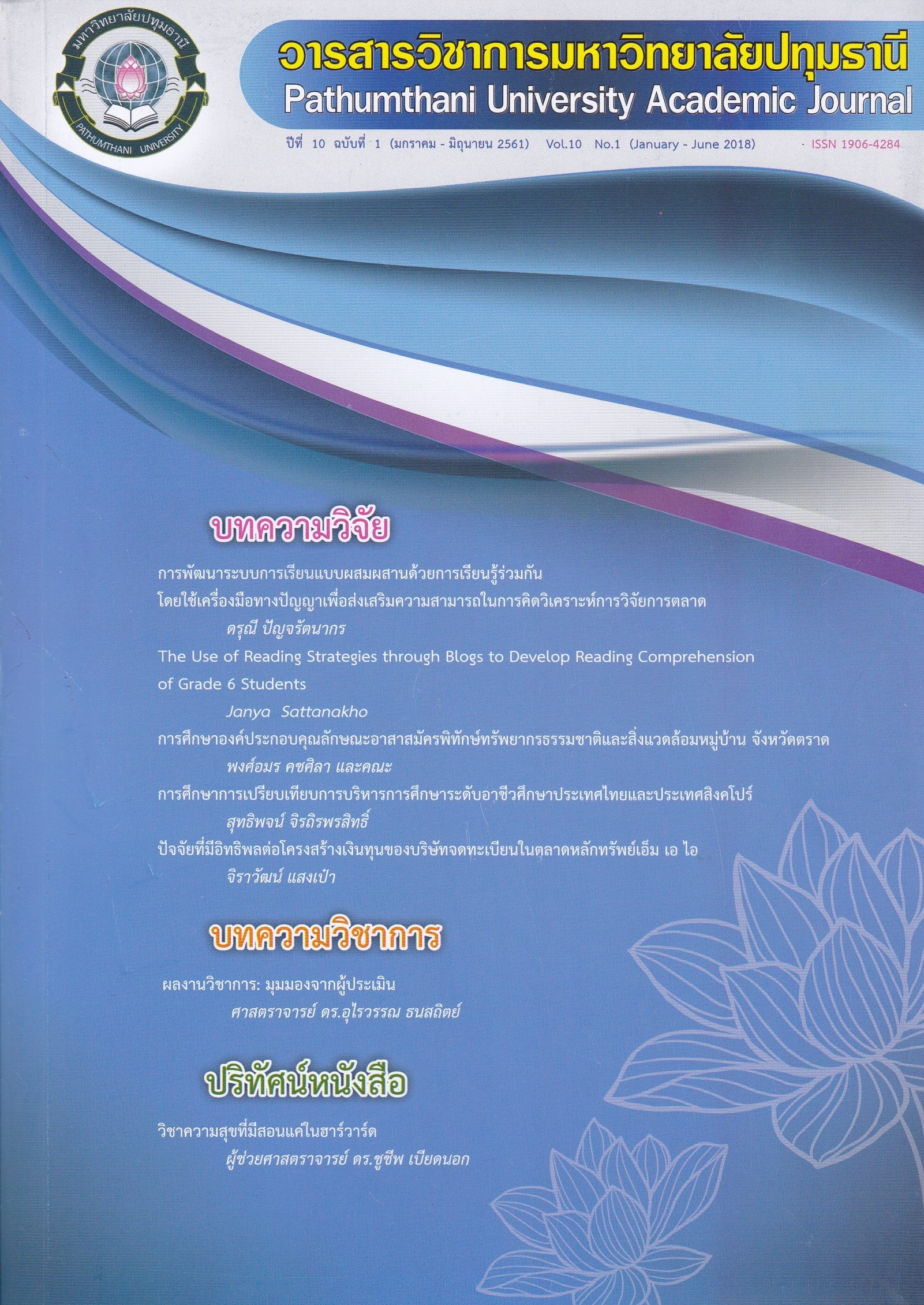Development of Directorate of Joint Communications, Royal Thai Armed Forces
Keywords:
องค์กรแห่งการเรียนรู้, การพัฒนาองค์การAbstract
This research is aimed to study about development of Directorate of Joint Communications, Royal Thai Armed Forces, so that it will be of a Learning Organization. The research has the objectives: 1) To study about internal factors of the organization having effects in the organization affecting being organization of learning of Directorate of Joint Communications, Royal Thai Armed Forces; 2) To study about process of management of knowledge affecting being of a Learning Organization of Directorate of Joint Communications, Royal Thai Armed Forces, and 3) To propose form of development of Directorate of Joint Communications, Royal Thai Armed Forces of a Learning Organization0. The collection of data is by using questionnaires from 344 persons in the organization. In data analysis, the researcher used the Statistical Package for the Social Sciences (SPSS), including frequency, percentage, mean, standard deviation and multiple regression analysis, having the level of statistical significance at 0.05. From the result of research, it was found that: Most persons have age of 41 years, graduating Bachelor’s Degree, having income 15,001-25,000 Baht per month, attached to the working unit of Military Telecommunication Center and having work for more than 10 years. Analysis of opinions concerning personnel management knowledge. Corporate Overview affect the organization of learning at a high level in every factor. Factors in Knowledge Management Individual overall influence of corporate learning at a high level in every factor. The organization of learning overall. At a high level in all aspects. The hypothesis testing found that knowledge management. Corporate Overview And the factor structure Factors culture Factors Leadership In relation to the organization of learning high line. Factors knowledge management, enterprise information technology factor. In relation to the organization of learning in a moderate direction. A correlation coefficient equals. 69, respectively. Factors in Knowledge Management Individual overview and the factors shaping knowledge. The exchange of knowledge Factors knowledge to good use. And the pursuit of knowledge In relation to the organization of learning high line. The leadership the organizational structure Factors culture Factors pursuits the creation of knowledge the exchange of knowledge and the knowledge to use. Affect positively correlated with the development model of the Department of Military Communications. Garrison Thailand The organization of learning. The multiple correlation coefficient is 0.95. And could predict the organization of learning, 89 percent significance level of 0.00 with a standard error of ± 0.26 forecast, which is based on three assumptions.
References
2. ภูษิต รุ่งแก้ว. (2555). การพัฒนารูปแบบองค์การแห่งการเรียนรู้ของสถาบันบัณฑิตพัฒนศิลป์ กระทรวงวัฒนธรรม. หลักสูตรปรัชญาดุษฎีบัณฑิต สาขาการบริหารการศึกษา. มหาวิทยาลัยสยาม.
3. สมนึก เอื้อจิระพงษ์พันธ์ และคณะ. (2554). “ศึกษาความสามารถในการจัดการความรู้กับความสามารถทางนวัตกรรมของผู้ประกอบการที่มีนวัตกรรมในประเทศไทย,” วารสารพัฒนาบริหารศาสตร์. (51) 1:2554
4. สุพิศาล ภักดีนฤนาถ. (2557). “การพลิกโฉมกองบังคับการปราบปรามสู่การเป็นองค์กรแห่งการเรียนรู้,” วารสารกระบวนการยุติธรรม. ปีที่ 7 เล่มที่ 1.
5. อภิชา ธานีรัตน์ และคณะ. (2555). รูปแบบการเป็นองค์กรแห่งการเรียนรู้ของคณะครุศาสตร์ มหาวิทยาลัยราชภัฏ ในกรุงเทพมหานคร. คณะวิทยาศาสตร์และเทคโนโลยี. มหาวิทยาลัยราชภัฏสวนดุสิต บัณฑิตวิทยาลัย มหาวิทยาลัยราชภัฏสวนดุสิต.
Downloads
Published
How to Cite
Issue
Section
License
บทความที่ได้รับการตีพิมพ์เป็นลิขสิทธิ์ของวารสารมหาวิทยาลัยปทุมธานี
ข้อความที่ปรากฎในบทความแต่ละเรื่อง เป็นความคิดเห็นส่วนตัวของผู้เขียน กองบรรณาธิการไม่จำเป็นต้องเห็นด้วยเสมอไป และไม่มีส่วนรับผิดชอบใด ๆ ถือเป็นความรับผิดชอบของผู้เขียนแต่เพียงผู้เดียว



